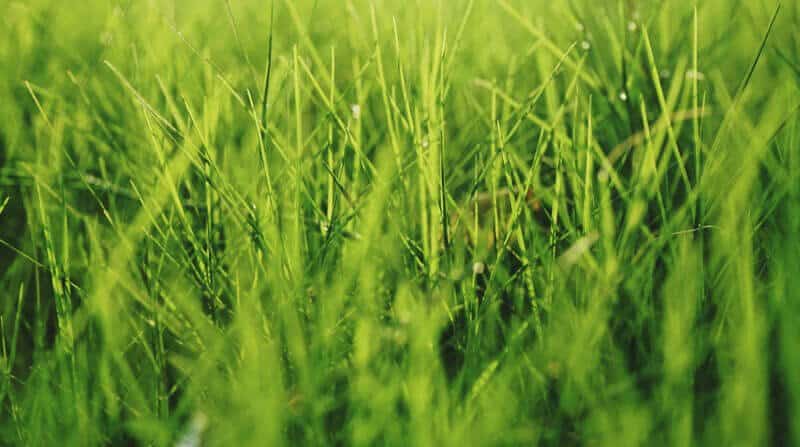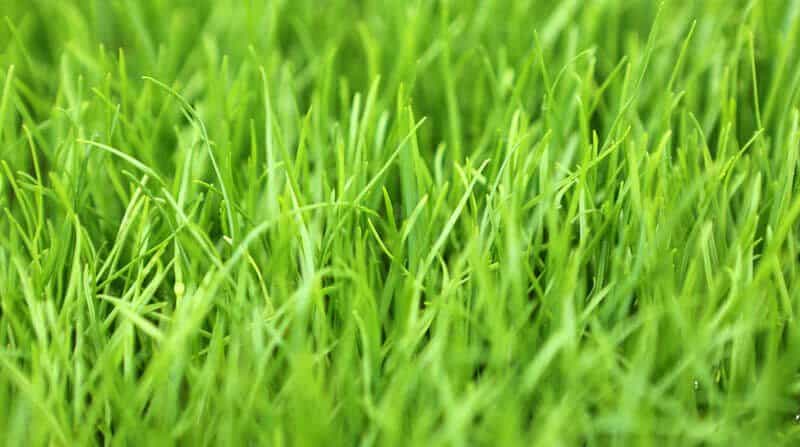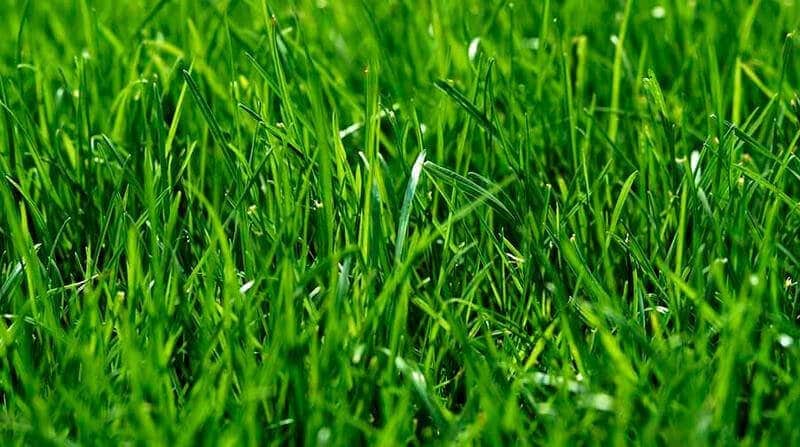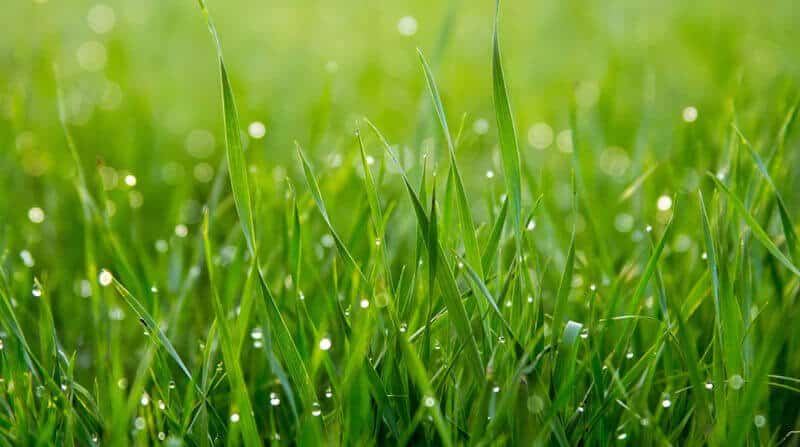Most people don’t know (or even care) about what types of grass are in their lawn.
However, different types of lawn require different types of grass if they’re going to look their best.
For example, you might have a busy family who uses the lawn for play. In which case your lawn will need to feature grass types that’ll cope with the wear and tear.
On the other hand, your neighbour might have a showstopper of an ornamental lawn. This calls for entirely different species of grass with different characteristic.
The lady across the street might have a shady lawn thanks to a big tree in her garden. In order for her lawn to grow well in this environment, she’ll need different grasses to you and your neighbour.
Knowing which grass types your lawn needs will not only make caring for it much easier, it’ll look thicker and healthier too.
And if you’re creating sowing a new lawn from scratch or overseeding an existing one, you’ll be able to choose the best grass seed for the job.
The Different Types of Grass Commonly Found In UK Lawns
The most common types of lawn grasses can broadly be split into 4 types;
- Bents
- Fescues
- Rye, and
- Meadow grasses
But there are different types of each so let’s look at them more closely.
Bent Grasses

Bent grasses are most commonly found in perfectly plat, ornamental lawns thanks to their very fine leaves and tolerance to close mowing.
There are three species of bent grass, each with different characteristics;
Creeping Bent (Agrostis stolonifera)
As its Latin name suggests, Creeping Bent grows and spreads by producing lots of stolons which grow across the surface of the soil. This creates a very dense sward which is able to choke out weeds and weed grasses.
For this reason, as well as the fact that you can mow it as short as 3mm, Creeping Bent is commonly used to create putting greens on golf courses.
However, if you want Creeping Bent in your lawn you’ll have to work hard to maintain it.
Its ability to spread quickly means it can choke out other species of grass, giving it a weed-like property. This fast production of stolons also means it produces thatch at a much faster rate than other grasses so you’ll have to scarify and de-thatch regularly.
And the fact that it grows and spreads by producing stolons means that it’s a shallow-rooting grass which has poor resistance to drought if your watering game isn’t up to scratch.
Common Bent (Agrostis capillaries)
You’ll find Common Bent on golf courses and the lawns of stately homes.
It’s much more ‘home lawn friendly’ because it doesn’t have the issues with stolen production which Creeping Bent has.
You can mow it very close but it’s more tolerant to drought and you won’t have to worry about it choking out other grass types.
It’s quite slow to establish but the results are worth the wait.
That said, it still produces thatch at a faster rate than other grasses so you’ll have to scarify lightly fairly regularly.
If you have a cylinder mower and like a formal, closely mown lawn, Common Bent would be a good inclusion.
Velvet Bent (Agrostis canina)
Velvet Bent has the finest leaves of all.
However, it’s not easy to grow. The soil must be fertile and conditions need to be moist and cool. You should only grow it in areas where these conditions occur naturally.
It grows very slowly but produces even more thatch than Creeping Bent so you’ll have to scarify on a very regular basis.
Velvet Bent isn’t great for home lawns unless you really know what you’re doing. It’s too temperamental and takes a lot of looking after.
Fescue Grasses

There are more than 450 species of grass which botanists call Fescues but only 4 are cultivated for lawns.
These are mainly Red Fescues which are very tolerant of drought and acidic soils.
However, on there own, Red Fescues don’t produce a dense, thick turf we all fantasise about. They are very adaptable though so they’re most often mixed with other varieties of turf grass.
When blended with other grasses, red fescues are very adaptable. They let other grasses grow where conditions suit them better and fill in the gaps where their tolerance to drought gives them an advantage.
Creeping Red Fescue (Festuca rubra subsp. rubra)
Creeping Red Fescue is a rhizome producing grass and has been used to produce turf for a long time.
There are many cultivars (varieties produced by selective breeding) available and the best ones produce even growth and rich colour.
Slender Creeping Red Fescue (Festuca rubra subsp. litoralis)
Thanks to its very fine leaves and tolerance to close mowing, Slender Creeping Red Fescue is used on golf courses all over the world.
Despite its tolerance to close mowing, it’s not as robust as Creeping Red Fescue. However, it does have the unique advantage of being tolerant to salt. So it’s good grass to sow if you live by the coast.
Chewings Fescue (Festuca rubra subsp. commutata)
Named after George Chewings, the New Zealand farmer who discovered it in the 19th century, Chewings Fescue is a non-creeping species.
It grows in patches to produce a very fine, dark green turf which grows beautifully in shaded areas.
Sheeps Fescue (Festuca ovina)
Sheeps Fescue is actually sometimes used as a pasture grass and isn’t as fine in appearance as the Red Fescues.
However, it’s incredibly tolerant to shade and grows beautifully in areas of shade and dappled sunlight.
As such, it’s often included in shady lawn seed blends.
Ryegrass

Traditionally, Rye Grass is a broad-leafed grass which farmers grow to feed livestock and so many gardeners consider it a weed.
However, as technology had advanced, Ryegrass has many benefits. Which is why you can buy both 100% Ryegrass seed blends for sports pitches and busy family lawns. Or mixes which contain Rye with Bents and/or Fescues for luxury family or more formal lawns.
One of Ryegrass’ biggest benefits is that it’ll grow in most soil types.
There are two main types of Ryegrass, each with many cultivars available. Some of which are very fine in appearance and produce beautiful turf.
Dwarf Amenity Ryegrass
A specially bred strain of Ryegrass which has a shorter growth habit. It produces lots of low growing tillers and as a result, a thick, dense sward.
It’s quick to germinate (much quicker than Bents and Fescues), it will out-compete weeds and tolerates close mowing down to around 12mm.
It’s also incredibly hard-wearing, which is ideal if you have a busy family who uses the lawn regularly.
Ryegrass is among the greenest of grasses too and it’s shiny. This is good news if you like a striped lawn as Ryegrass lawns create beautifully vivid stripes.
Tetraploid Amenity Ryegrass (Lolium Perenne)
Tetraploid technology is relatively new and fairly complicated.
In plain English, it germinates incredibly quickly, even in lower temperatures. Plus, it grows 4 root systems instead of just one.
This makes it very tolerant to wear and tear and resistant to disease.
It also looks fantastic.
Which is why it’s included in the seed blends of premiership and international football pitches, rugby pitches and more recently on golf courses.
Meadow Grasses

Meadow grasses feature in some seed mixtures thanks to their incredible tolerance to drought and shade.
That said, of the many types of meadow grass, only two species are used regularly.
Smooth Stalked Meadow Grass (Poa pratensis)
Also known as Kentucky Bluegrass, Smooth Stalked Meadow Grass grows well in damp conditions and spreads well to provide good ground coverage.
It’s very tolerant to wear and is suitable for sports surfaces, ornamental lawns and shaded areas.
In Conclusion
When it comes to creating an maintaining a lawn, there’s more to it than nipping to B&Q and grabbing a bag of seed off the shelf.
You need to choose the right types of lawn grass to not only give you want in terms whether it’s an ornamental lawn, a hard-wearing lawn or something in between. It also needs to be the correct fit for the environment in which your lawn resides, whether that’s full sun, partial shade, acidic soil etc.
I hope this article helps you choose the perfect grass type for your lawn. There’s more to choosing the right type of grass than you first think. That said, it’s not that complicated either.


Thanks Tim
I had Lady Ruby laid 30 years ago, a hard wearing slow growing lawn that with kids growing up and then a dog, has seen better days.
I’m doing the back garden again and thought I’d replace the lawn with a common Bent grass. I love my lines. Do many suppliers of turf do this type. I live in Chester